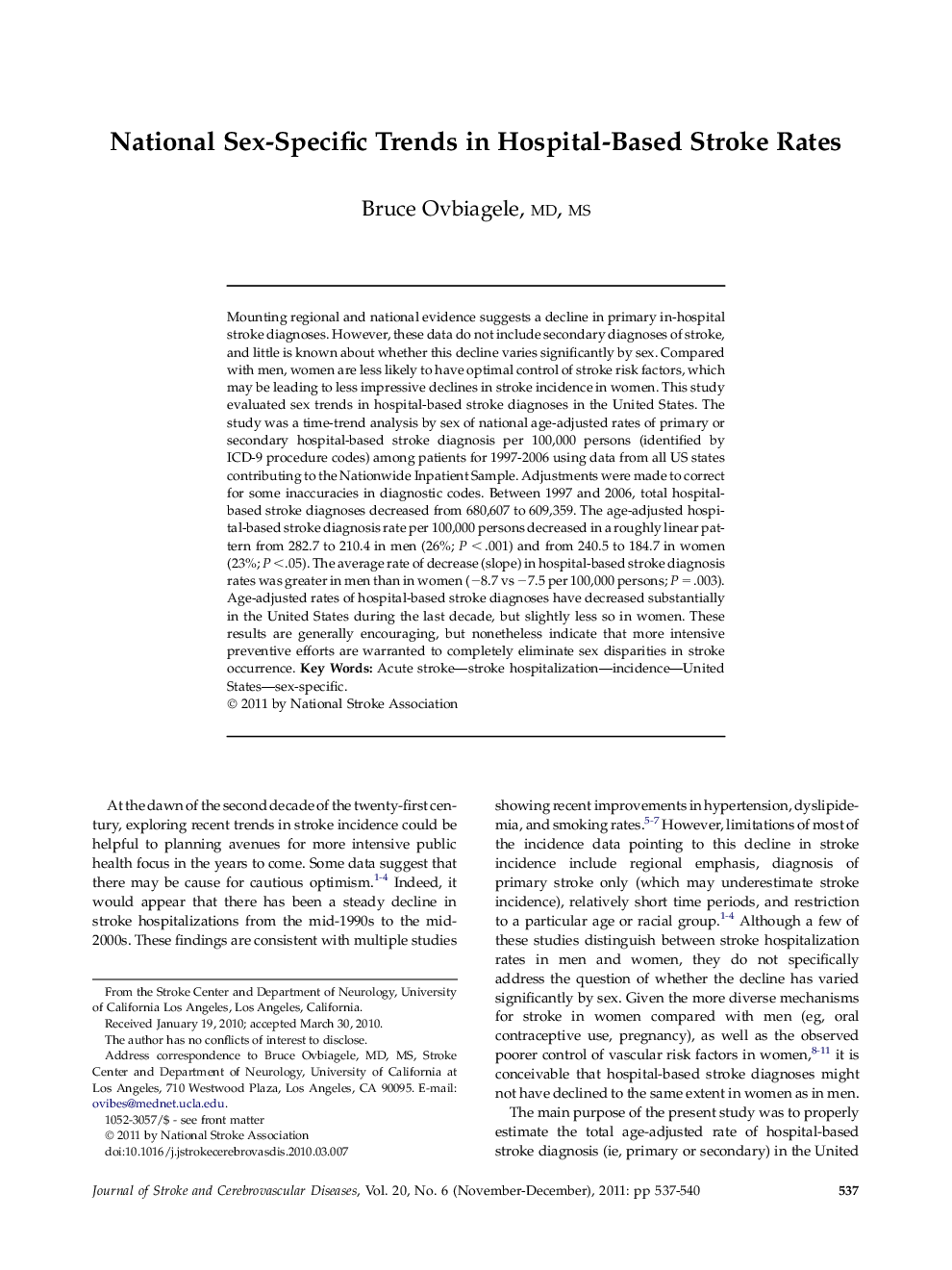| Article ID | Journal | Published Year | Pages | File Type |
|---|---|---|---|---|
| 2706572 | Journal of Stroke and Cerebrovascular Diseases | 2011 | 4 Pages |
Mounting regional and national evidence suggests a decline in primary in-hospital stroke diagnoses. However, these data do not include secondary diagnoses of stroke, and little is known about whether this decline varies significantly by sex. Compared with men, women are less likely to have optimal control of stroke risk factors, which may be leading to less impressive declines in stroke incidence in women. This study evaluated sex trends in hospital-based stroke diagnoses in the United States. The study was a time-trend analysis by sex of national age-adjusted rates of primary or secondary hospital-based stroke diagnosis per 100,000 persons (identified by ICD-9 procedure codes) among patients for 1997-2006 using data from all US states contributing to the Nationwide Inpatient Sample. Adjustments were made to correct for some inaccuracies in diagnostic codes. Between 1997 and 2006, total hospital-based stroke diagnoses decreased from 680,607 to 609,359. The age-adjusted hospital-based stroke diagnosis rate per 100,000 persons decreased in a roughly linear pattern from 282.7 to 210.4 in men (26%; P < .001) and from 240.5 to 184.7 in women (23%; P < .05). The average rate of decrease (slope) in hospital-based stroke diagnosis rates was greater in men than in women (−8.7 vs −7.5 per 100,000 persons; P = .003). Age-adjusted rates of hospital-based stroke diagnoses have decreased substantially in the United States during the last decade, but slightly less so in women. These results are generally encouraging, but nonetheless indicate that more intensive preventive efforts are warranted to completely eliminate sex disparities in stroke occurrence.
